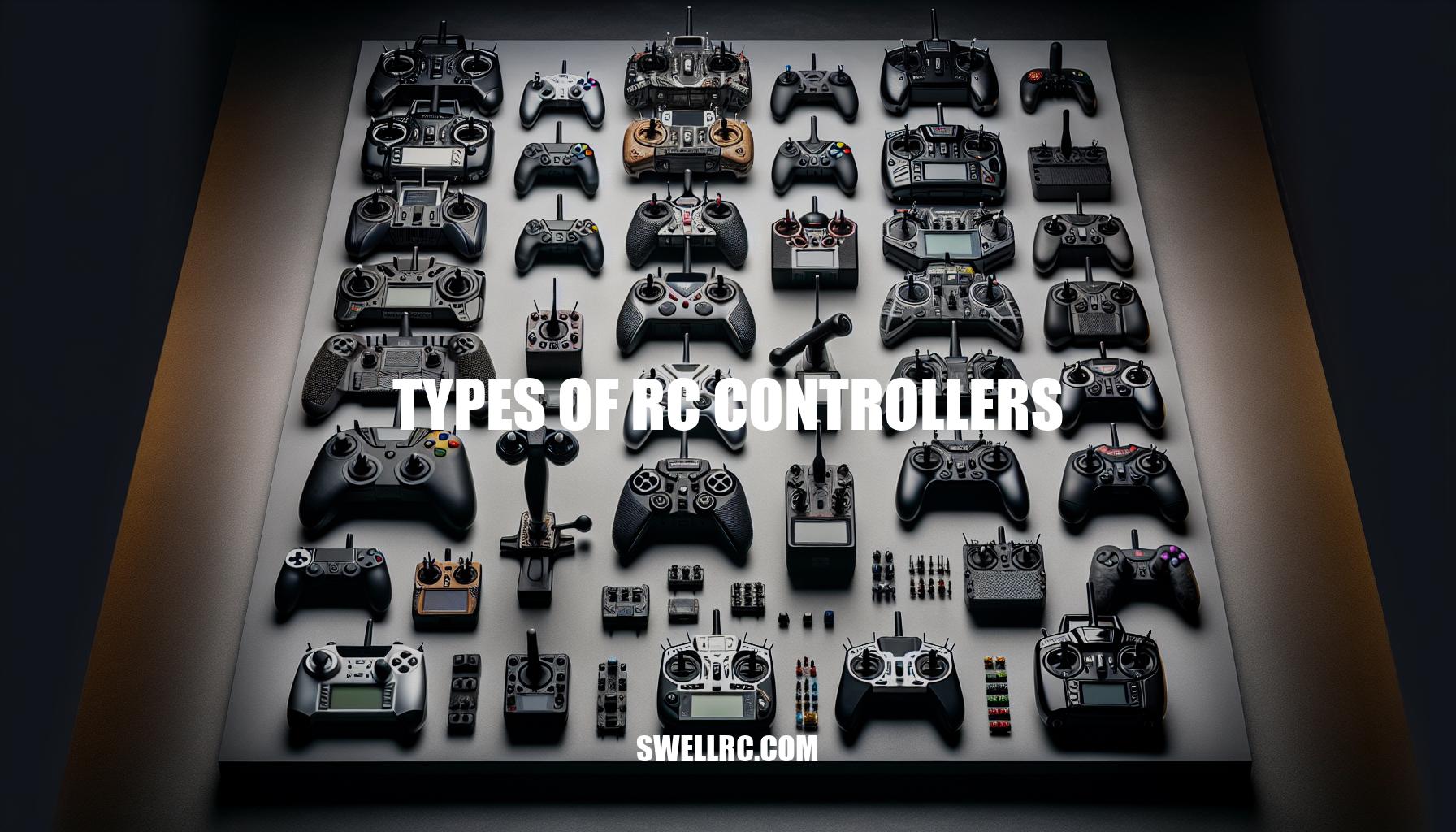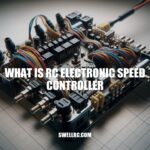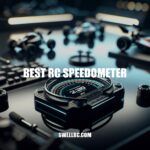Exploring The Types of RC Controllers: A Comprehensive Guide
Welcome aboard, fellow exploring enthusiasts! As pilots of our very own remote-control devices, we all know how thrilling these hobbies can be. From RC cars zigzagging through raceways to airplanes soaring in the sky, or submarines navigating mysterious underwater landscapes – our control is only as good as the RC controller in our hands. Picture this: The RC controller is essentially the ‘magic wand’ that breathes life into our miniature world. But when you dig a little deeper, it uncovers a much more complex world of buttons, signals, and channels, all tirelessly working to ensure our RC vehicles respond accurately to our every command. Fear not – today we’re going to embark on a voyage together, the kind wired with antennas and batteries, as we delve into the fascinating world of RC controllers!
The Ultimate RC Controller Guide
Welcome to the vast ocean that is the world of RC controllers! There are numerous types of RC controllers floating around, each with its unique functionalities, tailored for varying types of RC devices. The three principal ones that you’ll want to get acquainted with are wheel and trigger controllers, tank controllers, and aircraft controllers. Wheel and trigger controllers are the vehicles of choice for navigating the sea of RC cars and boats. Just like driving a real car, the ‘wheel’ steers and the ‘trigger’ deftly controls speed and direction. These controllers sport an intuitive design, while preserving the fun elements of the hobby, bridging the gap between reality and the RC world quite beautifully.
While tank controllers can look a tad bit complex, once you get the hang of it, they can offer immense control over your RC tank, bringing the thrill of battlefield maneuvers right onto your fingertips. They often come packed with multiple sticks and switches, allowing individual control of the tank’s left and right tracks, turret rotation, and even gun elevation!
Finally, we have the aircraft controllers, the ultimate in RC handsets. When you’re soaring through the skies with your RC plane or helicopter, you need a controller that’s up to the task. From basic four-channel models to sophisticated multi-channel designs, these controllers let you enjoy the sensation of flight by controlling everything from throttle and ailerons to flaps and retracts.
If you’re starting to feel a little overwhelmed by these types of RC controllers, don’t worry! We’re all in the same boat here. When you first dive into this hobby, it’s exactly like embarking on a voyage. It might seem daunting, but before you know it, you’ll be setting sail with confidence. We’ll dive into each type’s specific functionalities and features in the next section, helping you find the perfect ship for your voyage. Let’s take the plunge!
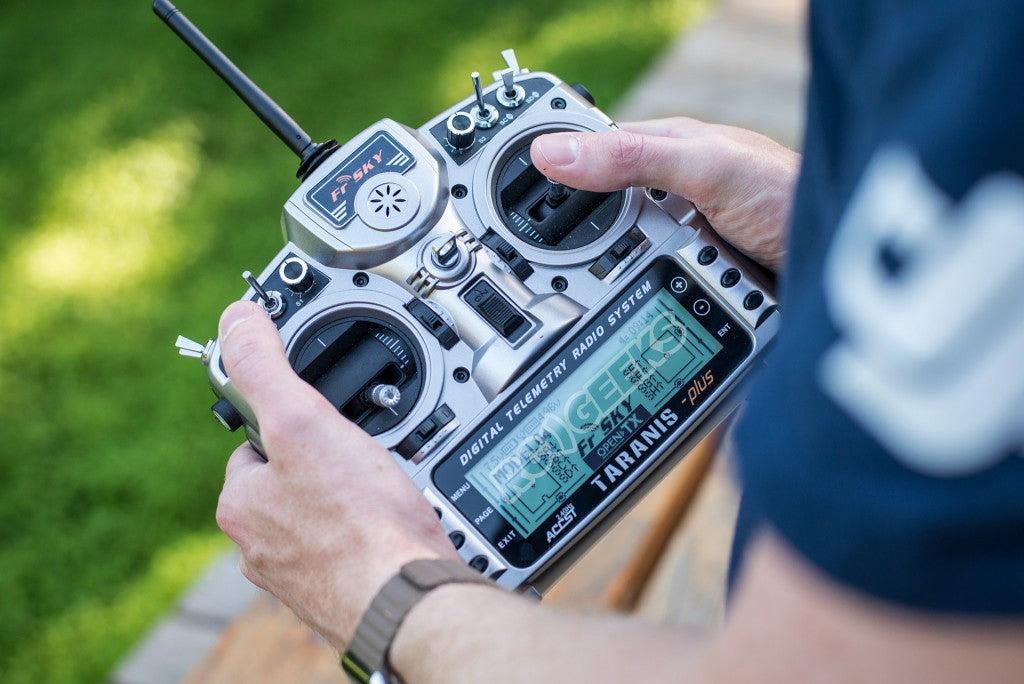
What are the functionalities of aircraft controllers in RC devices?
Sure thing! Aircraft controllers in RC devices are like the central nervous system of your beloved flying gadgets! They’re the real “brain” behind the operation. These savvy little units are responsible for receiving commands directly from your hand-held remote console, and conveying them seamlessly to the aircraft.
Think of it like this: Let’s say you’re at the park on a sunny afternoon, looking to soar your RC plane into the cloudless blue sky. You see, it’s the aircraft controller that takes your commands and translates them into specific actions. Want to go higher? Make a sharp turn? Or dare I say a loop de loop? Your controller has got you covered!
Yet, there’s more to these magic boxes than meets the eye. They are equipped with sophisticated technology, such as motion sensors and gyros, for accurate movements and unbeatable stability, even when nature throws its wind curveballs.
But guess what, it’s not just about tricks and flights. Safety is paramount too. Many RC devices come with return-to-home functions and fail-safe action coordinated by the controller, preventing your investment from getting lost, or worse, crashing unexpectedly.
In essence, without a competent controller, your RC device is like a bird without wings. Peace-out, hobbyists. Keep reaching for those skies!
The Fascinating World of RC Controllers
In the fascinating world of RC hobbies, understanding the types of RC controllers is akin to learning the distinct notes in a musical symphony. If you strip down any RC controller, its functionality, driven by the number of channels, stands out as its core. The basic two-channel arrangement does the job for most RC cars, allowing us to maneuver them backward, forward, left, and right. Yet, when it comes to flying an RC helicopter, those two channels feel as inadequate as a two-stringed violin for Beethoven’s Symphony No.9.
You’ll need an RC controller with up to 18 channels, each a hertz different from the other (for interference-free control), each governing a different aspect of your miniature chopper’s movements. But there’s more to these controllers than just channels. Features like transmission range assume significance, especially when your RC plane is a mere speck in the sky. You don’t want your controller’s range to bottom out at that moment!
- AM, FM, and the 2.4GHz revolution: As signal fidelity became paramount, RC controllers transitioned from AM (Amplitude Modulation) waves, susceptible to interference, to FM (Frequency Modulation). Now, the hobbyist world swears by the 2.4GHz controllers. So why this specific frequency? Long-story-short, it’s about striking a balance between range and power. Moreover, 2.4GHz is an open frequency, meaning no specific license is required to operate within this frequency range.
- Signal Interference: As one delves deeper into the RC world, topics like maintaining signal clarity over alternating terrains, managing power consumption, and being a good citizen by not intruding on public frequencies become increasingly important.
In essence, from the basic forward-backward controllers to the advanced 18-channel types of RC controllers, there’s a whole world of functionality and features to explore. Dig in, have fun and #keeplearning!
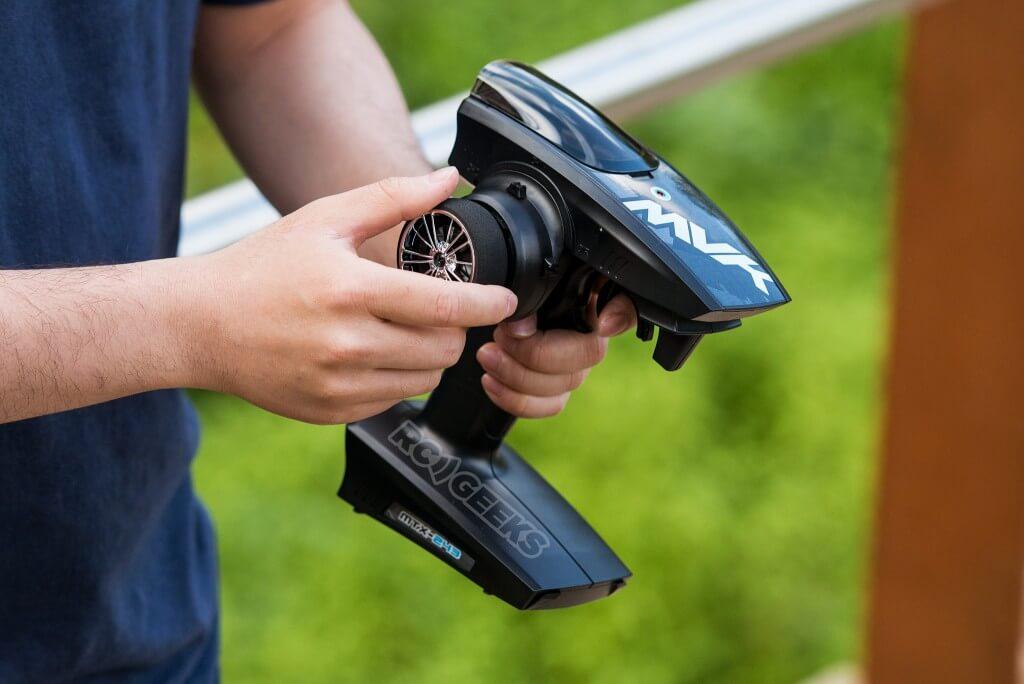
What are the different types of signals used in RC controllers?
Absolutely, let’s dive into those RC (Radio Control) signals! At the core, there are principally three types of signals you’ll find in RC controllers.
Firstly, there’s PWM (Pulse Width Modulation). It’s like the grandpa of signals, having been around for a good long while. It’s fantastic for simplicity but doesn’t really play nice with multiple channels.
Next in line, we have PPM (Pulse Position Modulation). Essentially, it’s an upgrade of PWM, able to handle multiple channels in a single signal. This little fella is somewhat ‘old school’ but still pretty reliable.
And finally, let’s talk about the newbie on the block: SBUS (Serial Bus). This is a digital guy and it’s really shaking things up. Its strength lies in its ability to transmit signals from up to 16 channels over a single wire. Talk about efficiency!
Ok, I get it, these might sound like just fancy acronyms. But different types of RC signals offer unique advantages that cater to different needs. It’s all about finding the right fit for your specific RC mission. There’s no one-size-fits-all here – it’s what makes the RC hobby so engaging, and dare I say, a tad addictive!
Digging into RC Controllers!
Can’t resist the thrill of a high-speed RC race car? Or perhaps, you’re more akin to graceful movements of an RC helicopter? Whatever your RC passion, your choice of controller can make or break your control over your favorite model. A big part of that “make or break” equation falls under understanding the different types of RC controllers.
Let’s take the wheel and trigger controller for instance. As ‘driver-friendly’ as can be, these controllers mimic the same controls you’d find in your own car, with the wheel handling the steering and the trigger managing the speed and direction. How about that for intuitive design? Transforming any living room into a racetrack? Yes, please!
Another mention-worthy control type is the tank controller. True to its name, it’s all about facilitating those rapid, back-and-forth movements that make for an exciting tank battle. Imagine making your way through a rugged terrain, feeling the rumble under your fingertips… all from the comfort of your favorite armchair.
Yet if the skies are what call to you, then an aircraft controller, complete with multiple channels for controlling pitch, yaw, and roll, maybe your cockpit to airborne adventures. Did you know controllers for these soaring beauties can have as many as 18 channels? Talk about having the sky at your fingertips!
From nimble cars zipping through the backyard to dominating tank battles, the right RC controller really does put you in the driver’s seat. Oh hey, speaking of that — brand power plays a role, too. Fan favorites like Traxxas lead in the RC world, but brands like Futaba and Hitec aren’t far behind, all offering their own spin on the remote control experience.
For instance, Futaba’s 6J transmitter is a popular pick with six channels and telemetry capabilities, giving you real-time feedback from your RC device. Nothing like keeping an ‘eye in the sky’, right?
The bottom line? It’s all about knowing what sets your RC heart racing and matching that with the controller that will give you the adrenaline rush you’re chasing. Next time we’ll guide you on how to handpick the finest controllers for your particular needs. Now go out, start your engines and master the art of remote control!
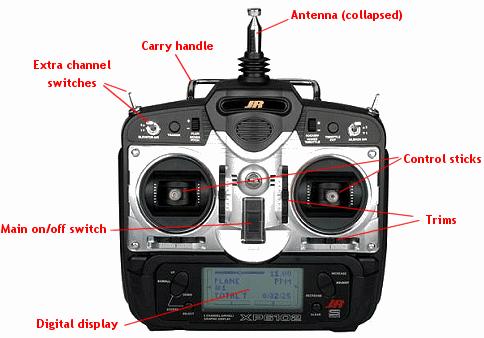
What are the different types of RC controllers?
You’re diving into a fascinating world my friend – the endless exploration of RC controllers. Each type brings its own flavor to your adventures. At the heart of it, there are mainly three types – Pistol Grip Controllers, Stick Controllers, and Wheel Controllers.
Pistol grip controllers, my personal favorite, are ergonomically friendly with a trigger for throttle and a wheel for steering. They’re super intuitive, making your RC vehicle feel like an extension of yourself.
Then there’s the stick controllers. These babies are a favorite among drone enthusiasts and airplane pilots. Two-stick layouts offer you ultimate control, covering everything from throttle, pitch, yaw, and roll. Think of a pro-level video game controller, but oh so much more sophisticated.
Lastly, we have the wheel controllers – an absolute vintage beauty. They may look like they’ve stepped out of an 80s arcade game, but trust me, for RC boat enthusiasts, this is the go-to guy. These controllers can make you feel like a real captain, steering your RC boat across the turbulent waters of your local pond.
Each controller type provides a unique experience and understanding them can significantly boost your RC game and, honestly, just deepen your enjoyment overall. Your choice will likely hinge on the type of RC vehicle you’re running and what feels most natural and enjoyable to you. Remember, there’s no right or wrong here, only what calls to you most!
RC Controller Types
Choosing the Right RC Controller: A Buyer’s Guide
Now that you’re well-versed in the different types of RC controllers, let’s unpack how to choose the right one for you. The selection process is similar to picking the perfect pair of shoes – it should match your needs, budget, and offer a comfortable fit. Think of it as your control cockpit, it needs to feel right in your hands!
First, consider the type of RC device you’re handling. Are you driving an RC car or flying an RC helicopter? The purpose and complexity of your RC gadget will guide your choice, and you’ll find that wheel and trigger controllers are a great fit for land-based vehicles, while joysticks cater more to the aerial crowd. Speaking of fit, ergonomics can’t be underestimated. Test different controllers if you can and find one that feels natural and comfortable.
Your budget will play a role in your selection as well. While you wouldn’t buy a pair of running shoes for a cocktail party, you also wouldn’t splurge on a top-tier drone controller for a simple RC car, right? Value for money is crucial, so weigh the pros and cons
The number of channels in a controller is another aspect to ponder. Think of channels as the Controller’s vocabulary. The more channels, the more commands it can give. An RC car might get by with 2 channels for turning and speed, but a sophisticated RC helicopter might require 6 or more channels. Again, aligning with your RC device and skill level is key.
The last step is to check for additional features and signal reliability. Does the controller have fail-safe mechanisms? Are there any extra perks like built-in telemetry? Is the controller operating on 2.4 GHz band for optimum signal stability? Research reviews and ratings to ensure you’re not purchasing a controller that frequently drops its connection.
Ultimately, there’s no one-size-fits-all RC controller. It’s about finding the perfect synergy between user and device, providing a seamless and enjoyable RC experience.
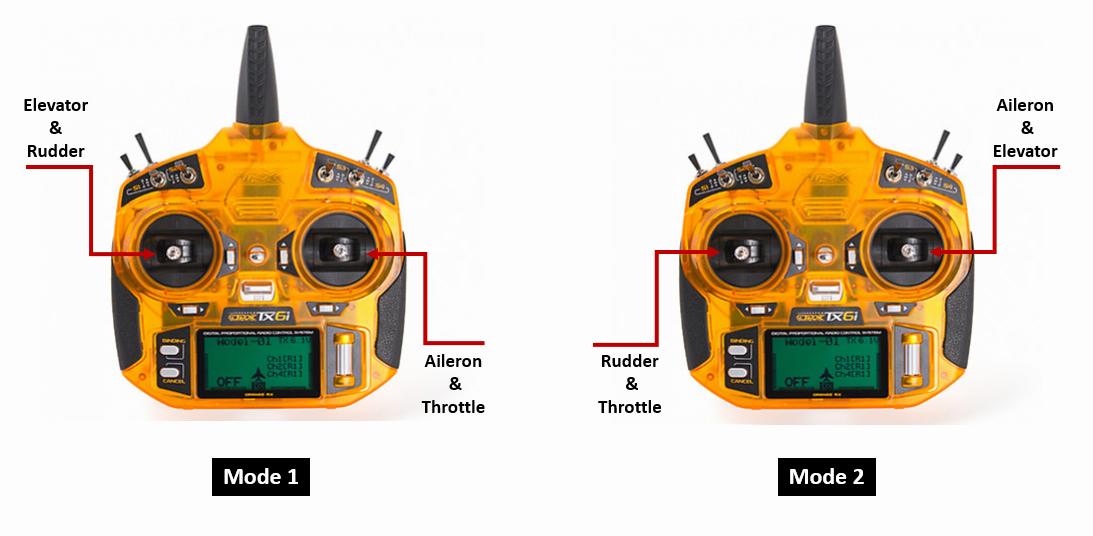
What factors should I consider when choosing an RC controller?
Choosing the perfect RC controller requires careful thought, buddy, as it’s not a one-size-fits-all deal. First and foremost, range plays a big role. We all want our toys to fly high and sail far, right? So, look for a controller with a range that matches your adventurous spirit.
Then, turn your attention to the number of channels. It’s like this, more channels equate to greater control features. If you’re just flying a basic RC plane, 4-6 channels may meet your needs. But, for those high-tech drones or advanced aircraft, you may need up to 9 channels! Talk about serious power!
Also, don’t overlook the battery life. There’s nothing more frustrating than gearing up for a day of RC fun, only for your controller to run out of juice halfway through. So, opt for a long-lasting battery life that matches your RC playtime.
Then you have the price factor. Now, I know price doesn’t determine everything, but let’s be practical. Quality usually comes at a cost but balancing it well with your budget is art, isn’t it?
Lastly, size and weight are down to personal comfort. Choose something that feels right in your hands, not too bulky or too lightweight.
Remember, your RC controller is like your magic wand, guiding your precious aircraft or vehicle through the skies or across the landscape. Choose wisely!
And so we arrive at the end of our hands-on journey diving into the diverse world of RC controllers. Hope you’ve gained a wealth of knowledge considering types of RC controllers, their multitude of features, functionality, and deciding factors for making the right purchase. Guiding you in this fascinating world has been wonderful just as taking a captivated child through a toy land store.
But bear in mind, selecting your RC controller is as vital as picking your enchanting vehicle, airplane, or boat. It’s like the steering wheel of your car or the rudder of your ship – the absolute joy of controlling your RC device’s movements comes from this magical piece of equipment!
As we roll into the unpredictable future, it’s enticing to dream about what’s on the horizon in RC technology. We’re perhaps looking towards smartphone integration or even automated controls being part of the RC fun. To be sure, RC hobbyists have plenty to look forward to!
In the end, though, no matter how much technologically advanced our RC controllers turn out to be, the wheel-and-trigger controllers will always retain that old-world charm. And the thrill of steering that imaginary wheel! So gear up, fellow RC enthusiasts, and dive into this thrilling adventure. You never know; you may discover hidden treasures in the form of your perfect controller.

